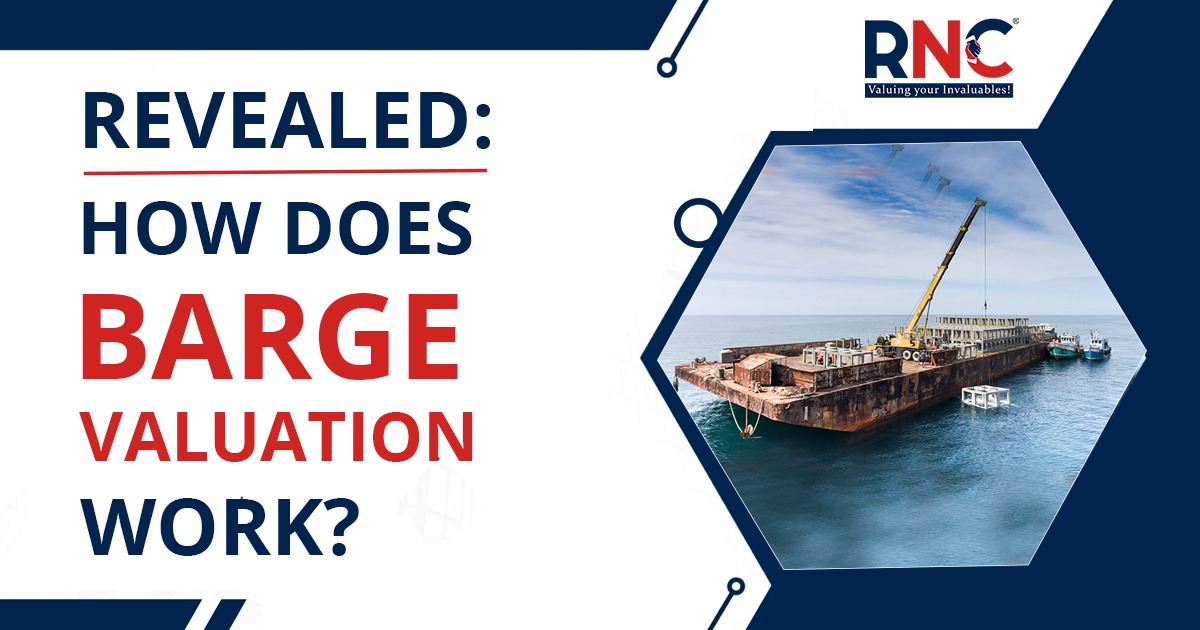
The initial aspect of the Barge’s value will fall under consideration is the reason for valuing the equipment.
If the Barge must be sold quickly to pay for other business debts, it’s not unexpected that the Barge will sell for a lower value than if the Barge is sold to the right buyer at the right time or held onto while being used as collateral for a business loan.
The other aspect of determining the value of Barge is the market conditions.
By having a better understanding of how Barge valuation works, investor will have a better idea of what to expect when anyone is ready to have their Barge assets appraised.
If it is in good shape, it will be expected to last much longer than a similar vessel that has been abused or poorly maintained, and that superior condition is reflected in a higher overall value.
The manufacturer’s reputation and the performance and popularity of that specific model will also come into play, with better reputation, performance and popularity driving a higher overall value.
Types of Barges
A barge is a marine vessel (without a motor or engine) that’s primarily used to carry cargo with the help of a towboat or a tugboat.
They are flat-bottomed, and used on lakes, throughout canals, at seaports, and of course, across inland waterways.
Barges fall into categories based on how they’re being used & how much cargo they can hold.
Inland Barges
The majority of barges being used on the inland waterways are inland barges.
They operate on smaller bodies of water.
They are the most cost-effective method of transportation for large volumes of cargo.
Deck Barges
They carry cargo like construction equipment, natural rock and stone, large metal pipes for infrastructure growth, etc.
They can be docked for extended periods of time and act as “dry land” for workers & machinery who need more space for equipment.
Crane Barges
They have a squared-off or boxed stern that keeps it afloat under the weight of a crane.
They are used to lift items while docked or during offshore construction.
There’s additional support in the bulkhead and deck frame construction, and the deck of the barge uses specialized crane mats for traction.
Hopper Barges
They are used for large volumes of cargo like sugar, steel, grain, coal, and ore, etc.
They feature double-hull construction for maximum flotation & can either be open or covered
The latter (i.e., covered) helps protect cargo from weather and other elements during long trips on the waterways.
Shale Barges
They are constructed like deck barges with cargo bins or hoppers and used in the oil and gas industry to transport cargo from the drilling site.
Several environmental restrictions apply to this cargo, and it must be disposed of by a company with approval and expertise.
Liquid Mud Barges
They have pipes & pumps on-board to circulate and dispose of fluid material.
These barges are constructed with cargo storage bin tanks at the deck level with four separate compartments.
Ocean Barges
Ships that can’t make it to port due to size or shallow water use ocean barges to help transport cargo directly to land.
Ocean barges are designed & constructed to withstand the elements of nature and are heavier than other types of barges making them more expensive to build, maintain & tow.
While these are the most commonly used barges on inland waterways, there is also a long list of other types of barges: Power barges, barracks barges, and there are even royal barges.
Factors affecting valuation of Barge
Total Age of the vessel
Total Round/Trips and Total Distance (kms
Total Volume/Load Carrying Capacity
Operational Expenses such as maintenance, salary and wages, Insurance, Certifications etc
Also Read, A Mini Guide to Equipment and Machinery Valuation
FAQs:
1. What is barge valuation?
Barge valuation is the process of assessing the monetary worth of a barge—a flat-bottomed vessel—based on its type, condition, specifications, age, and utility in marine operations.
2. Why is barge valuation important?
Barge valuation is essential for financing, insurance, mergers and acquisitions, accounting, taxation, and regulatory compliance in the maritime and logistics sectors.
3. What factors affect the valuation of a barge?
Key factors include barge type (oil, cargo, accommodation), age, build material, maintenance history, cargo capacity, market demand, and compliance with safety standards.
4. Who requires barge valuation services?
Shipping companies, offshore contractors, lenders, insurers, financial auditors, and asset managers often need barge valuation for decision-making and reporting.
5. How is barge valuation conducted?
It typically involves site inspection, reviewing technical specs, analyzing market comparables, and applying appropriate valuation methods like cost or market approach.
